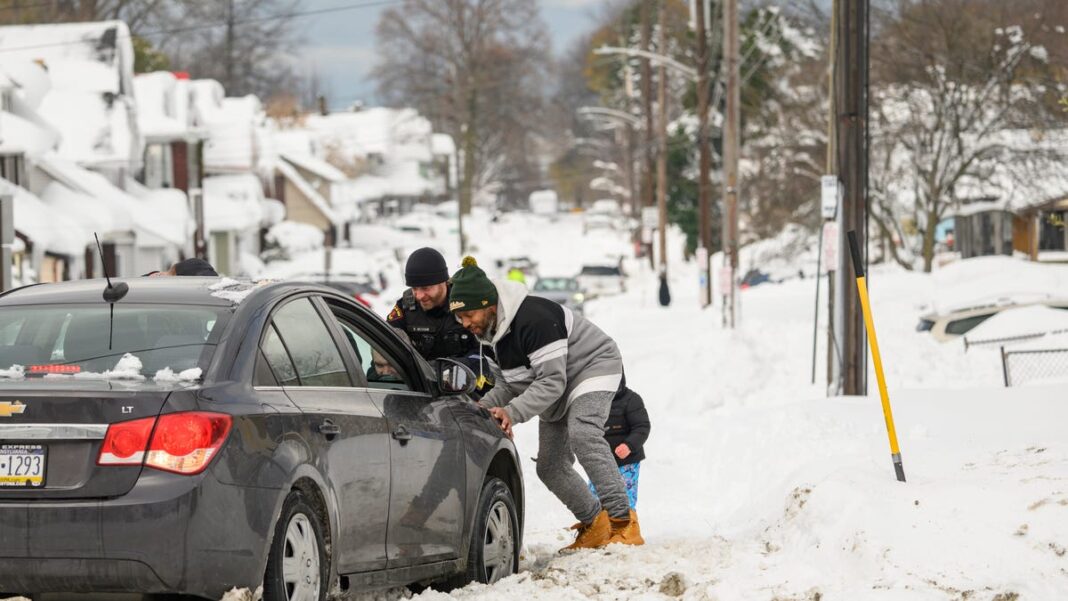‘Dangerous’ weather ahead: Persistent snow and bitter cold persist
As another wave of severe lake-effect snowstorms struck the areas around the Great Lakes, cities and towns prepared for its impact. These storms have already dumped up to 5 feet of snow in parts of the Upper Midwest and Northeast, with conditions worsening.
According to AccuWeather, a storm moving across southern Canada will bring strong winds and snow showers, along with additional lake-effect snow from Tuesday night to Thursday in parts of the Midwest and Northeast. The cold air moving over the warmer waters of the Great Lakes is expected to intensify the snow and create “hazardous travel conditions in the area,” the forecaster cautioned.
The National Weather Service has predicted heavy snowfall for Michigan’s Upper Peninsula and northern Lower Peninsula late Tuesday and Wednesday, with moderate to heavy snowfall expected in sections of Northern New England as well.
Several communities in New York near Lake Ontario reported accumulations of 5 feet of snow or more by Tuesday morning. Erie, Pennsylvania, set a record by receiving 22 inches of snow in a single day on Friday. Some parts of Erie County have already seen over 4 feet of snow, with more on the way, forecasters indicate.
AccuWeather senior meteorologist Tom Kines mentioned that slight changes in wind direction and other factors will influence where the most significant snowfalls will occur.
“These lake-effect snow bands can be quite narrow, affecting areas only 10 miles wide,” said Kines in an interview with YSL News. “There’s no assurance that the same locations will receive heavy snowfall again this week.”
Temperatures will remain significantly below the seasonal average in a much larger area than where the heaviest snow will occur—10 to 15 degrees below normal in parts of the Ohio Valley, Mid-Atlantic, and Southeast regions, according to the weather service.
What is lake-effect snow?
Lake-effect snow forms from narrow bands of clouds that develop when cold, dry arctic air moves over relatively warm lake waters. As the chilly air travels over the unfrozen waters of the Great Lakes, warmth and moisture are absorbed from the lake’s surface into the lower atmosphere, according to the National Weather Service. This process causes the air to rise and form clouds that can lead to heavy snowfall, sometimes reaching rates of 2 to 3 inches per hour or more.
The direction of the wind also plays an essential role in which areas will experience lake-effect snow. It is possible for one area to be receiving heavy snow while the sun is shining just a couple of miles away in either direction.

